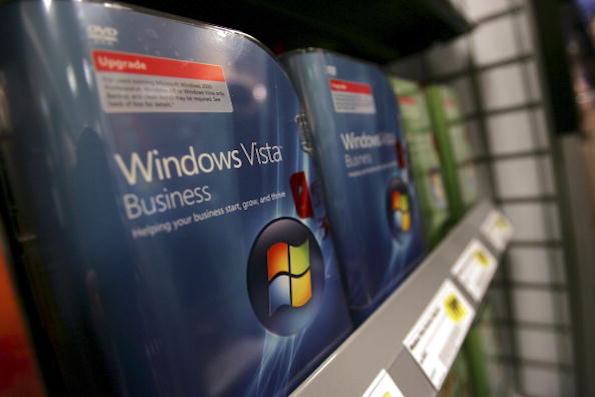How can I get Vista on my new computer?
We'll be featuring an abridged Q&A from Fred Langa's LANGALIST, a feature available exclusively to paid subscribers of the Windows Secrets newsletter. Today's Q&A: A user has a new computer but doesn't want the new operating system. How can he install Windows Vista?
February 17, 2016

Q.I have a new PC with Win10 on it and an old PC running Vista. I don’t like Win10 much. I know Vista intimately, and I’m happy with it.
I’d like an article that addresses putting Vista on my new Dell computer. I have a Vista [installation] disk, but when I tried to use it, the Dell locked up and there was no cursor.
An article describing the pitfalls of this would be very helpful. If I could get Vista on the new PC I could stop using my older, less-reliable hardware.
A. Your new PC likely has hardware that simply didn’t exist when Vista came out. Which is why installing Vista didn’t work — the native drivers built into Vista don’t know how to make the new hardware work.
Your best option is to install an app such as Oracle’s free VirtualBox (site) on the new Win10 system. Then set up Vista on a virtual PC, running inside Win10.
VirtualBox offers built-in presets for Vista — you can simply select Vista as the “Version” in the “Create Virtual Machine” dialog box. Then simply accept the offered VM-settings choices. Once you’ve created the virtual PC, use your original Vista installation disc to install the OS on the VPC — just as you would on a physical, standalone PC.
If everything is set up correctly, Vista will run in the normal and totally familiar fashion. You can then install whatever programs you want on the Vista VPC, and copy over your user files via disc, network, or copy/paste.
In routine use, you’ll boot the PC to Win10 in the normal way (and begin to get used to the new OS); you then open VirtualBox and launch the Vista VPC (shown in Figure 1).
Figure 1. Vista running on a virtual machine inside a standard Win10 setup.
You can run Win7, Win8, XP, NT, ME, 98 — all the way back to DOS — on a virtual machine inside Win10. In fact, you can also run Linux, OS/2, some Mac versions, and more! I have 11 VPCs set up on my Win10 Pro/64 system, running a mix of 32- and 64-bit Windows, all the way back to Win98; plus a small Linux distro (see Figure 2).
Figure 2. My VirtualBox control panel with 11 different VPCs — including Linux.
I know of no better way to keep older operating systems alive on newer hardware or how to cleanly run alternate OSes alongside a primary OS.
Keep this in mind: Once an OS is no longer supported, it becomes more vulnerable to hackers and malware — it’s no longer safe to use on a routine basis. Although a host system is generally protected from unwanted events in a VPC, the VPC running an obsolete OS could itself become compromised.
That brings us back to Ike’s specific question. Vista is in its last year of life (it will reach “end of support” on April 11, 2017; MS info). So a Vista-based VPC is at best a short-term solution. Vista should not be connected to the Internet after April 11, 2017.
So that gives you a bit over a year to use Vista on your new hardware. That should be enough time to get comfortable with Win10.
Then, when Vista becomes unsupported, you’ll be ready to retire the Vista VPC — and enjoy Win10’s more modern conveniences and enhanced security.
In the meantime, enjoy the best of both worlds on your new hardware!
(Originally published on Windows Secrets on Tuesday, February 9, 2016.)
*
Editor's note: We feature an abridged Q&A from Fred Langa's LANGALIST, a column available exclusively to paid subscribers of the Windows Secrets newsletter,. What you see here is just a small sampling of what Langa's writing for the newsletter — go here for more information on how to subscribe.
About the Author
You May Also Like






.jpg?width=700&auto=webp&quality=80&disable=upscale)
